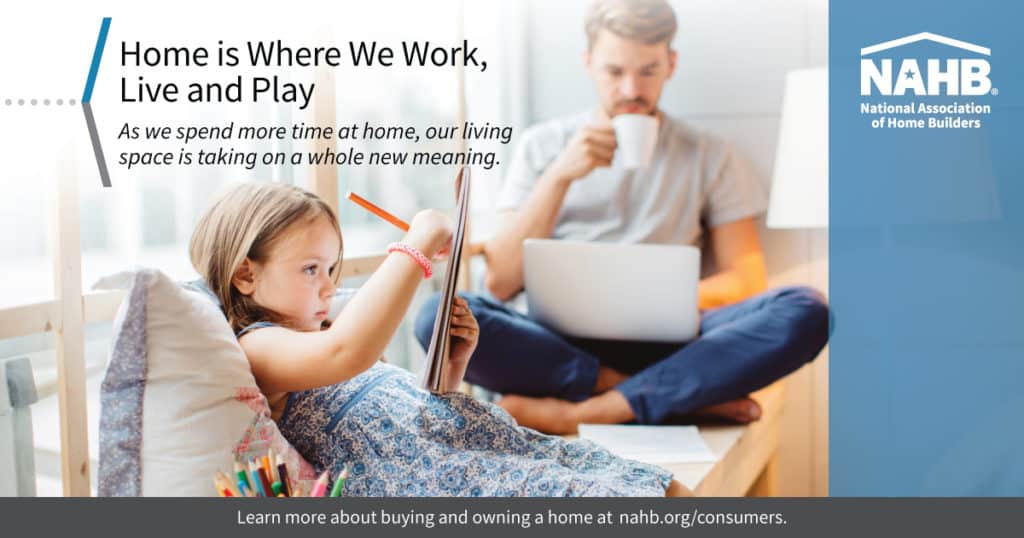
What does the turmoil of the coronavirus mean for new homes and communities? For starters, we are all spending more time at home, and gaining a greater appreciation for, or frustration of, all the things that come with that.
What started as work from home, though, may have morphed into something bigger and more important for those of us involved in home and community development, says J. Walker Smith, chief knowledge officer of brand and marketing of KANTAR, a leading data, consumer insights and global consulting practice. Walker calls it “LFH,” or life from home.
“Is it possible that home could become the ‘new car’ in the sense that post-World War II life has been built around the car? Will post-pandemic life be rebuilt around the home instead?” Walker stated in a webinar in April on the state of the pandemic and its effect on politics and business.
Lifestyles could be re-made around the home the same way they were remade around the car after World War II. Back then, driving spurred the growth of the suburban master-planned community, drive-thrus, convenience stores, large centrally located shopping malls and a car-centric culture that still exists, no matter how hard we all try to break it with new community concepts and more sustainable neighborhood-scale walkable living.
Walker cautioned against any disruption — this one included — causing a massive about face. But he said we can expect this disruption to clear the way for underlying trends that are already out there to become more mainstream.
In home design, that means:
- Smaller footprint homes, more attainably priced will continue to be the product type of choice. If consumers re-boot how they earn a living or pivot to a different career, attainability will matter.
- Home wellness technology to monitor health, track at-home fitness and maybe even detect the temperatures of visitors coming and going.
- Floor plans need to become more multifunctional for working from home, for gathering with others, and for supporting multigenerational activities all happening at once — i.e., no wasted space, and more space that can be made to work however the person or family living there needs it to. For example, laundry sinks could be replaced with tubs that double as DIY dog washes, and garages could be turned into home gyms.
- Storage, storage, storage, everywhere — but hidden in plain sight. Storage that works and isn’t just a quick fix for small remnant spaces. And what about tastefully designed hand sanitizer dispensers near the front door?
- Indoor/outdoor spaces that work. For example, porches that are actually deep enough to sit comfortably in a chair. Sometimes this means an extra foot, and it adds cost. But consumers that value this will make trade-offs elsewhere for it.
The innovators and creators who make this industry so great will come out of this stronger and more committed to doing everything possible to contribute to creating spaces and places for people who, more than ever, have come to see the importance of home.
Resource: NAHB Now: April 2, 2020
This is article was written by Teri Slavik-Tsuyuki is the principal of tst ink, bringing a customer-focused “how might we?” approach to creating communities and brands that connect and engage with how people want to live their lives. The full article is available on Best in American Living.
